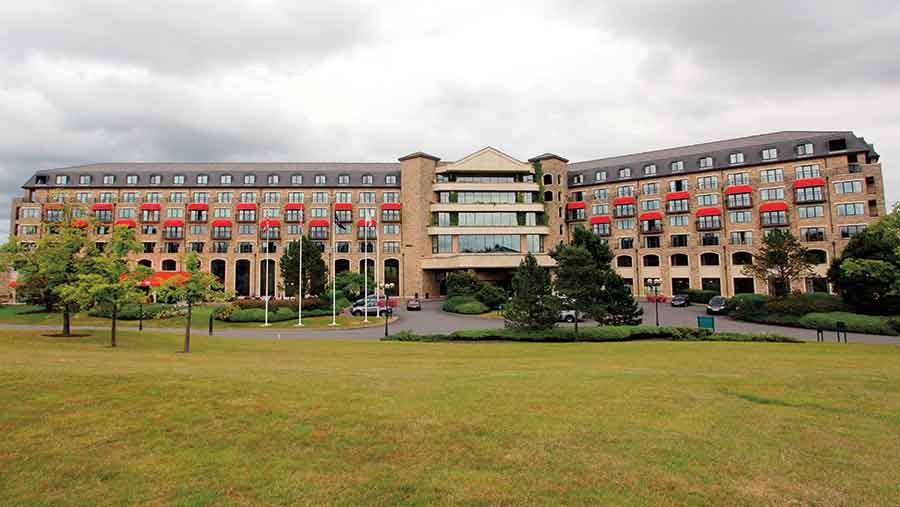Egg and Poultry Industry Conference looks ‘back to the future’
 © Rex/Shutterstock
© Rex/Shutterstock Back to the Future is the name given to the afternoon session of the upcoming Egg and Poultry Industry Conference (Epic), which this year is celebrating its 50th anniversary.
To help mark the occasion, some of the sector’s “elder statesmen” will be sharing their thoughts and observations on how the industry has evolved and what might lie ahead.
For Eric Reid, who has been with broiler producer Moy Park for over 50 years, the story is one of innovation and integration.
See also: Five top things George Eustice said at Epic 2015
“I first saw integration in action when I visited the US on a young farmers’ exchange in 1964,” he recalls. “For me it is the only way to produce food, involving the whole supply chain working in partnership.”
This approach has driven efficiency at every stage. “At farm level, feed conversion has improved from 2.5 to 1.5 in some instances,” says Mr Reid.
“Every year sees a point or two gain, due to improved genetics, more sophisticated nutrition, reduced disease and better environment.”
The scale of production has also increased exponentially. “When broilers were first introduced to Northern Ireland in 1961, a farmer would think he was busy if he had 2,000 broilers. Today, a single man can look after 150,000 birds thanks to bulk feed, computerised controls and mechanisation.”
Mr Reid has also seen significant change at processor level, starting in an era when evisceration was done by hand and a factory might turn around 2,000 birds an hour, to a situation today where factories are fully automated and can handle 14,000 birds an hour.
And, whereas the trade in the 1960s and 1970s was dominated by frozen birds for the wholesale market, today the emphasis is on producing fresh poultry for supermarkets.
Such efficiency gains and quality improvements mean that poultry is now the envy of every other livestock sector, says Mr Reid.
Egg sector
Similar advances have occurred with eggs, says Aled Griffiths of Oaklands Farm Eggs, who will also be addressing Epic.
He first started commercial production in 1954, at which time his hens were each producing about 240 eggs a year – white eggs sold to dealers.
Technological and genetic advances since then mean they are now achieving nearer 320 eggs a year.
“On top of that, shell quality is better and disease resistance is stronger,” he says.
“But red mite is much more of a problem now, with many of the products we used to use to control them now banned.”
Innovation in egg packing has also paid dividends, with automation meaning it is now possible to pack up to half a million eggs an hour at his company’s state-of-the-art packing centre.
Mr Griffiths also points to changes in the marketing of eggs – in particular the demise of the old egg marketing co-operatives, such as West Cumberland, Thames Valley and Yorkshire Eggs, and their replacement with direct contracts with supermarkets.
While this has made life tougher for many, the introduction of the British Egg Industry Council has been a major boon, he says, in particular the development of the Lion Code in the wake of the salmonella crisis of 1988.
“This scheme now underwrites the quality of everything we do in the egg sector, and is something other parts of farming aspire to.”
Time to register
The 50th Epic takes place at the Celtic Manor Hotel, Newport, south Wales, on 6 and 7 November. Other speakers include Defra farm minister George Eustice, chief executive of Tyson Foods Donnie Smith, and Heather McGregor, aka Mrs Moneypenny from the Financial Times. Book your place now.
